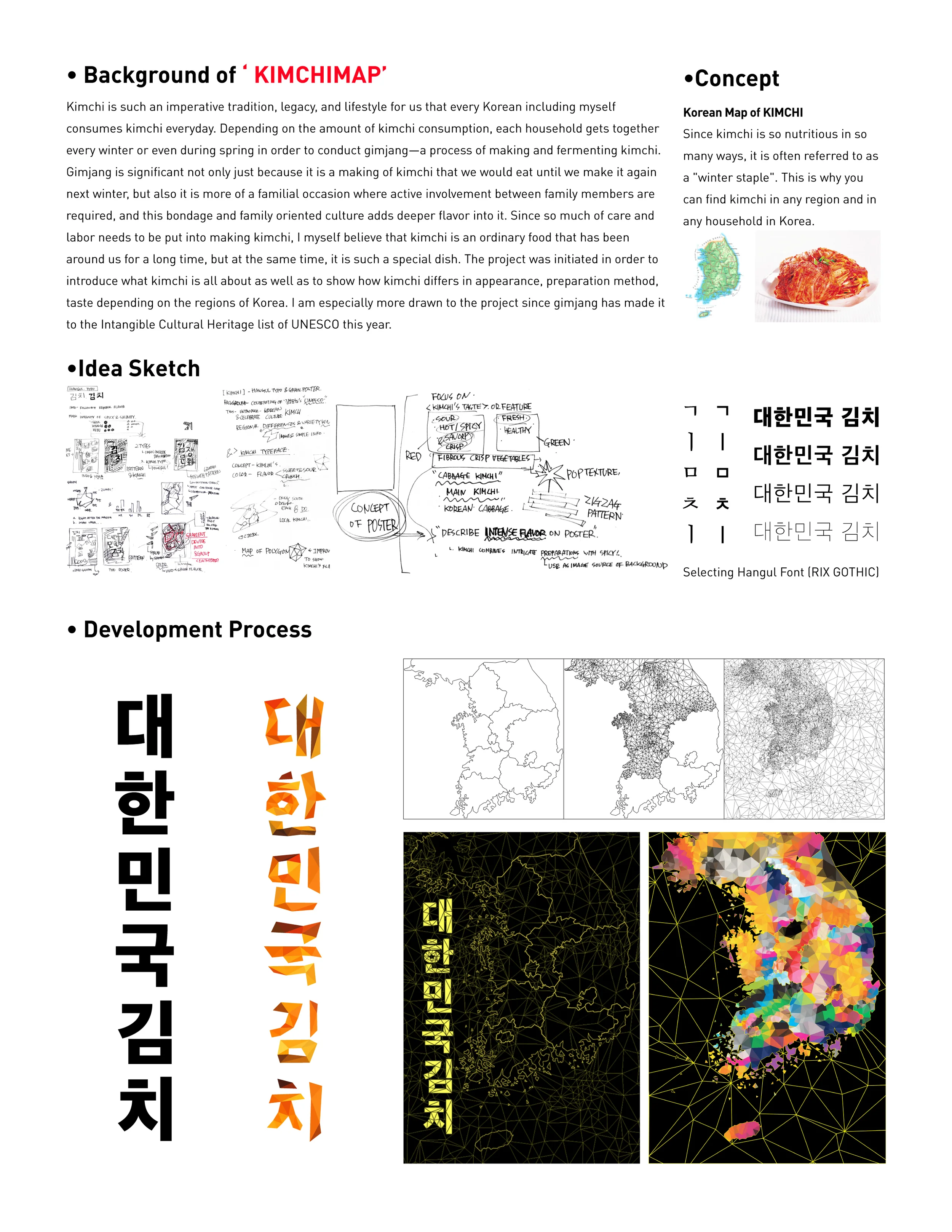Kimchi is such an imperative tradition, legacy, and lifestyle for us that every Korean including myself consumes kimchi everyday. Depending on the amount of kimchi consumption, each household gets together every winter or even during spring in order to conduct gimjang—a process of making and fermenting kimchi. Gimjang is significant not only just because it is a making of kimchi that we would eat until we make it again next winter, but also it is more of a familial occasion where active involvement between family members are required, and this bondage and family oriented culture adds deeper flavor into it. Since so much of care and labor needs to be put into making kimchi, I myself believe that kimchi is an ordinary food that has been around us for a long time, but at the same time, it is such a special dish. The project was initiated in order to introduce what kimchi is all about as well as to show how kimchi differs in appearance, preparation method, taste depending on the regions of Korea. I am especially more drawn to the project since gimjang has made it to the Intangible Cultural Heritage list of UNESCO this year.
My intention was to introduce various types of kimchi depending on geographical aspect in a new and impressive way. I interpreted the artwork through using map in order to make it look tidy and organized as well as to grab the viewers’ attentions easily.
My priority, for this project to have its full effect, was to focus on making compatible typographs with tastes and colors of kimchi. Kimchimap visualizes the taste and color of various kimchi from different regions of Korea.
Various colors were utilized in the making of this typography in order to visualize and express the sweet and sour taste and the crisp texture of kimchi from indigenous areas.

